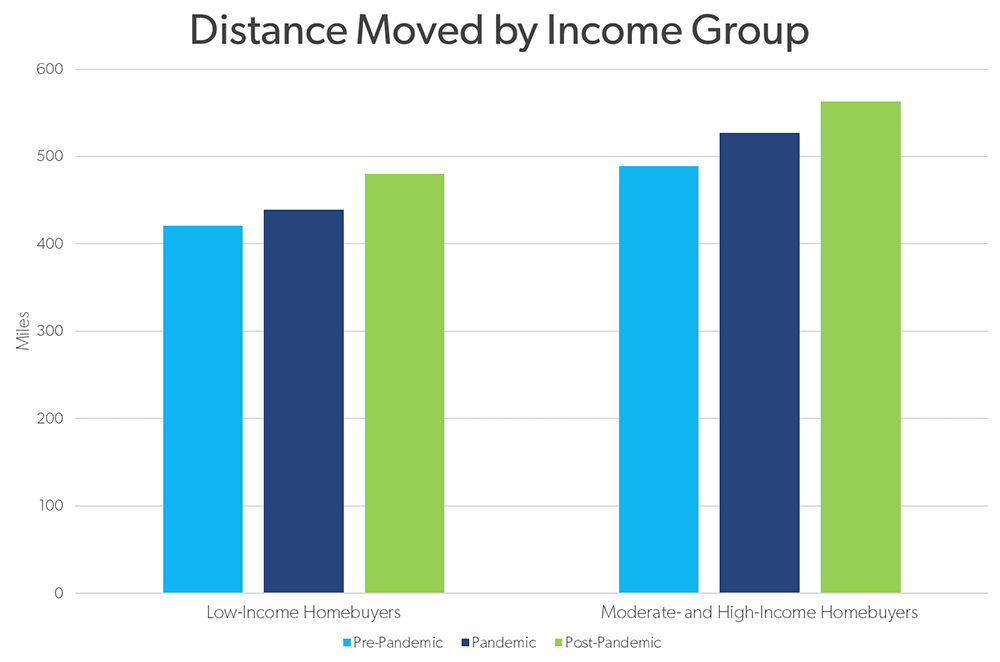The COVID-19 pandemic led to an increase in migration away from larger, more expensive areas toward more affordable ones. However, not all types of homebuyers were able to migrate as easily. Freddie Mac research shows that, since the start of the pandemic, low-income homebuyers are 25% less likely than moderate- and high-income homebuyers to move out of the top 25 largest metro areas by population, and those who do move are more likely to move shorter distances.
To track these net migration patterns by income, Freddie Mac researchers analyzed all accepted loan applications from 2018 to 2022 using Freddie Mac’s Loan Product Advisor® (LPA) data, segmenting homebuyers into low-income and moderate- and high-income groupspdf based on whether they earned more or less than 80% of the area median income in the geographic area from which they were applying.1
Our analysis of the loan application data suggests that migration out from the top 25 largest metro areas increased for the overall population.2 However, for low-income homebuyers, net migration away from these largest metros has been more muted. Because they are less likely to relocate, fewer low-income homebuyers are able to take advantage of possible cost savings from moving to a more affordable area.
We caution that the loan application data provides a portfolio view of Freddie Mac’s conventional loans and captures only the intent to move.3
Where Low-Income Loan Homebuyers Are Moving
Migration out of the top 25 largest metro areas accelerated during the pandemic for homebuyers regardless of income. However, our analysis found differences in migration patterns based on the mortgage homebuyers’ income level.
Net Migration by Typology and Income Group
 Net Migration: Top 25 Largest Metros
Net Migration: Top 25 Largest Metros
slide 1slide 2slide 3
Compared to moderate- and high-income mortgage homebuyers:
- Fewer low-income homebuyers moved out of large metro areas. Moreover, their net migration slowed more sharply after many restrictions related to COVID-19 were lifted or relaxed in March 2022.
- Low-income homebuyers were more likely to apply to move into rural areas, and less likely to apply to move to mid-sized metro areas.
- On average, low-income homebuyers applied to move 20%-25% less distance than moderate- and high-income homebuyers.3
Median Distance Moved by Income Group

Pre-pandemic is defined as the period from March 2018 to February 2020; Pandemic as the period from March 2020 to February 2022; and Post Pandemic as the period from March 2022 to September 2022.
Source: Freddie Mac LPA®


